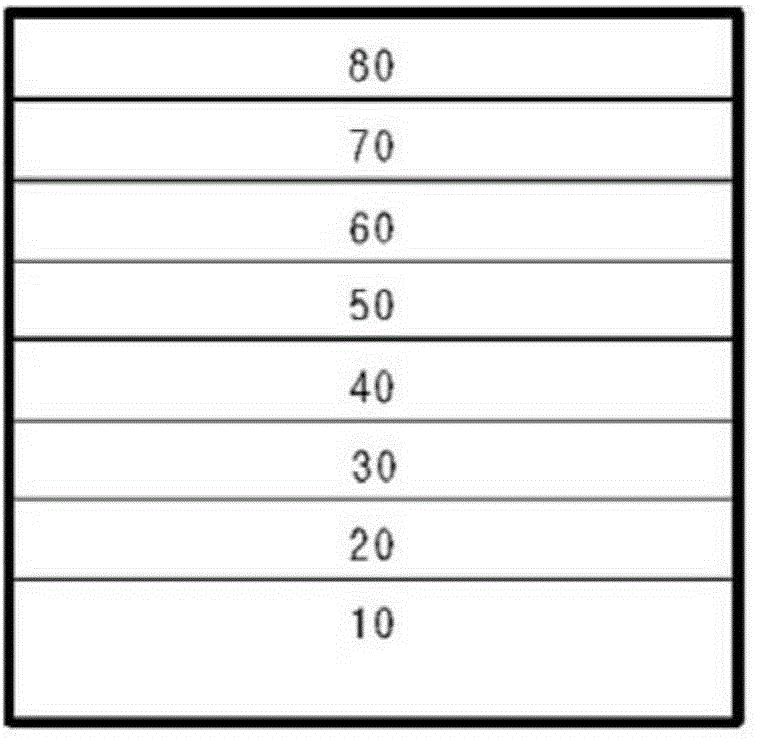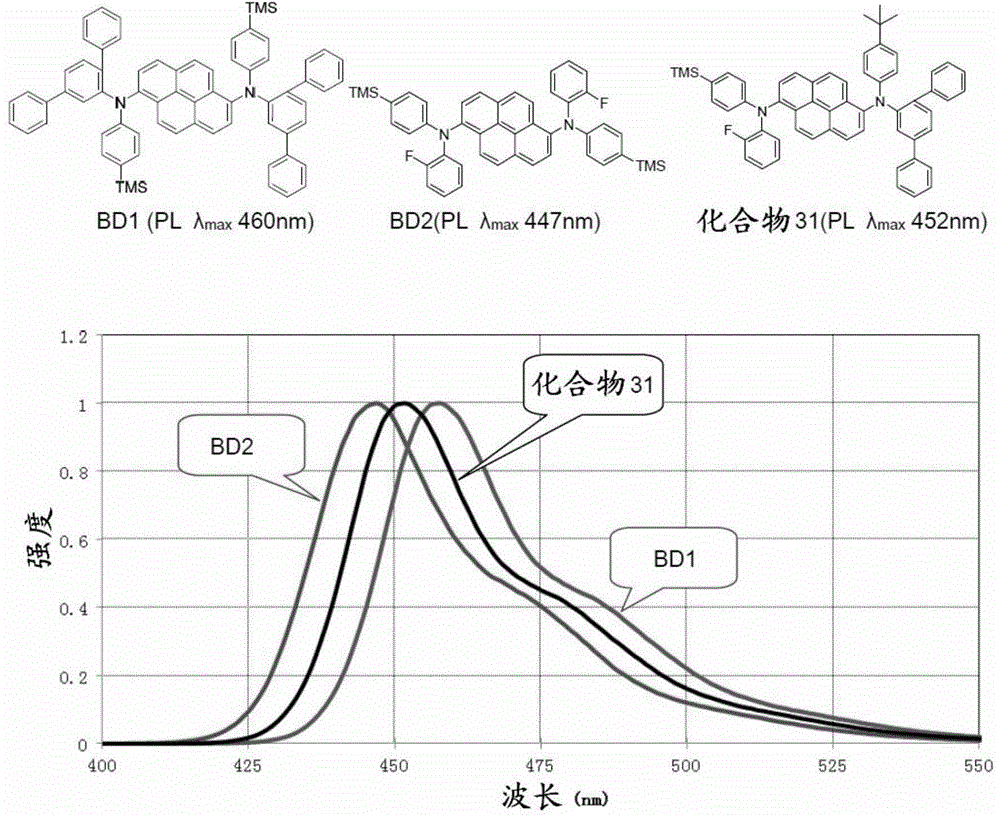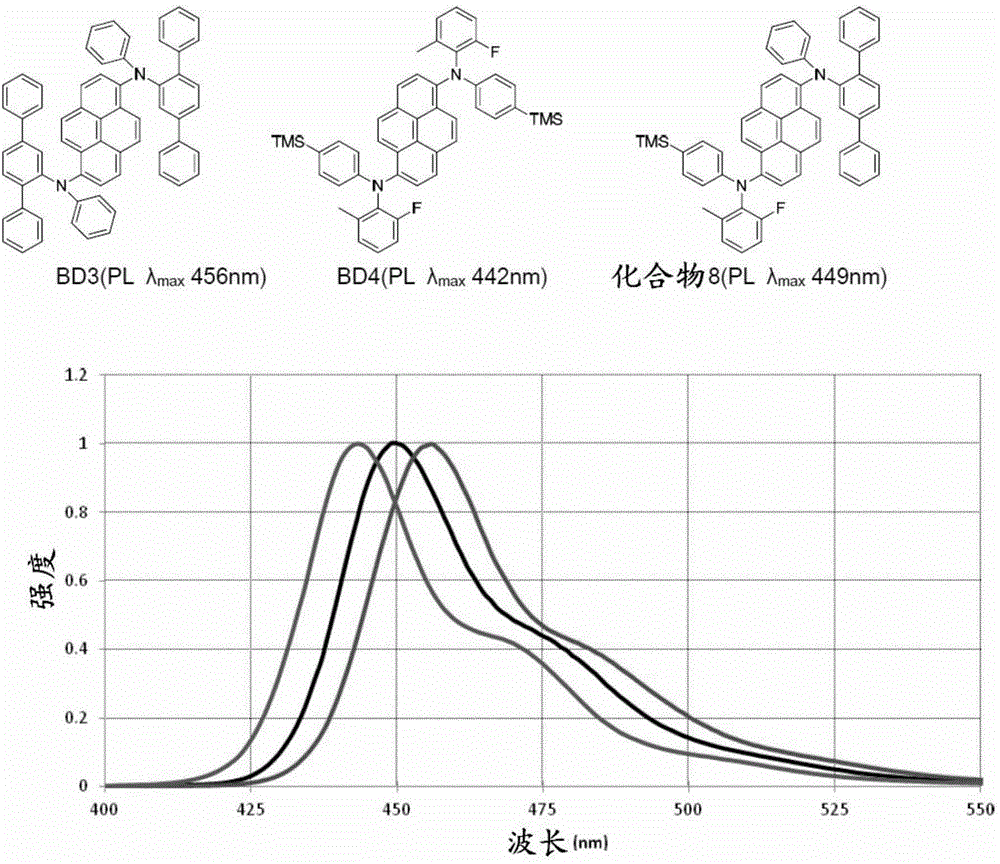Electroluminescent compound and electroluminescent device comprising same
A technology of electroluminescent components and compounds, applied in the direction of electroluminescent light sources, silicon organic compounds, electrical components, etc., can solve the problems of low blue color purity, difficulty in reflecting dark blue, insufficient luminous efficiency and brightness, etc., to achieve Excellent color purity, excellent luminous properties, and excellent thermal stability
- Summary
- Abstract
- Description
- Claims
- Application Information
AI Technical Summary
Problems solved by technology
Method used
Image
Examples
Embodiment approach
[0031] According to a preferred embodiment of the present invention, when the compound of the [chemical formula 1] is based on L---L', all of A and B or A or B have more than one substituted or unsubstituted silyl group , excluding the case where the substituents from C to D are all hydrogen; on the basis of L---L', all of C and D or C or D have more than one substituted or unsubstituted silyl group, The case where all the substituents of A to B are hydrogen is excluded.
[0032] In the organic electroluminescent compound according to [Chemical Formula 1] of the present invention, although said A to D may each independently be an aryl group having 6 to 40 carbon atoms substituted or unsubstituted by one or more substituents , but in order to specifically describe the present invention, when the above-mentioned A to D are phenyl groups, they can be represented by [Chemical Formula 2] and have an asymmetric structure based on L---L'. However, the scope of the present invention ...
Synthetic example 1
[0129] Synthesis Example 1: Synthesis of [Compound 8]
Synthetic example 1-(1
[0130] Synthesis Example 1-(1): Synthesis of Intermediate 1-a
[0131]
[0132] 40g (0.16mole) of 2,5-dibromoaniline (2,5-Dibormoaniline), Pd(PPh 3 ) 4 Add 7.4g (0.006mole), 88.1g (0.64mole) of potassium carbonate and 46.6g (0.0.38mole) of phenylboronic acid into a 1000mL 4-neck round bottom flask, add 320mL of toluene, 160mL of ethanol, and 120mL of water to reflux for 12 hours. After the reaction, the organic layer was separated, and the aqueous layer was extracted twice with 100 mL of toluene. The collected organic layers were concentrated under reduced pressure, and recrystallized from methanol to obtain Intermediate 1-a (30 g, 76.7%).
PUM
 Login to View More
Login to View More Abstract
Description
Claims
Application Information
 Login to View More
Login to View More - R&D
- Intellectual Property
- Life Sciences
- Materials
- Tech Scout
- Unparalleled Data Quality
- Higher Quality Content
- 60% Fewer Hallucinations
Browse by: Latest US Patents, China's latest patents, Technical Efficacy Thesaurus, Application Domain, Technology Topic, Popular Technical Reports.
© 2025 PatSnap. All rights reserved.Legal|Privacy policy|Modern Slavery Act Transparency Statement|Sitemap|About US| Contact US: help@patsnap.com



